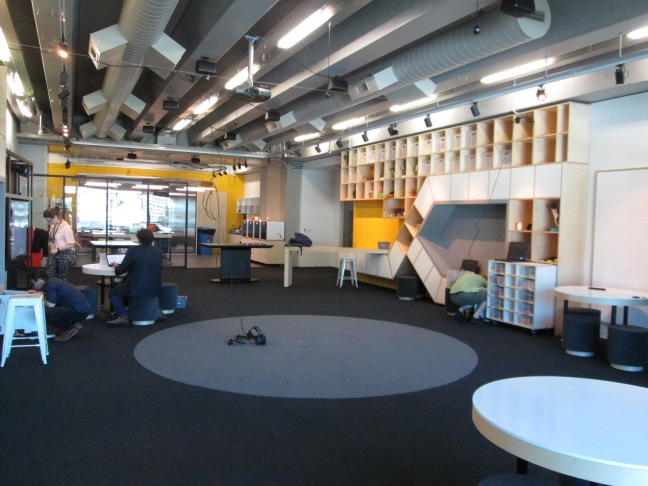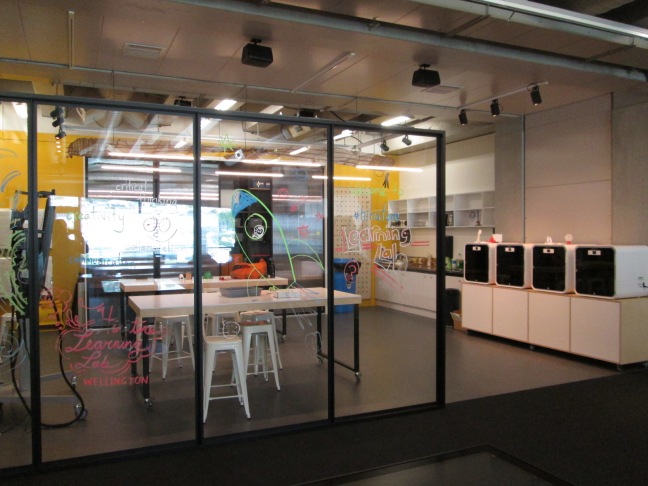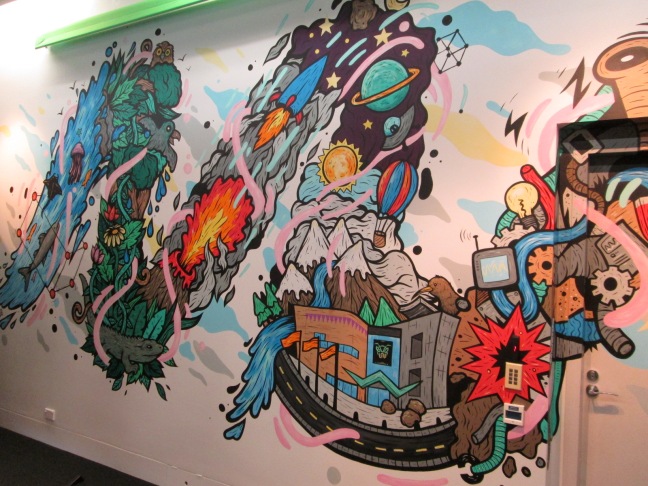Te Papa Tongarewa is the national museum and gallery of New Zealand; the literal translation of its Maori name is ‘container of treasures’. When I was a kid, the national museum and gallery was in a different part of Wellington, on a hillside in a 1930s building that looked out over the city. It was great fun to run around the older museum, and I have very fond memories of the ‘under the sea’ diorama, but I appreciate that for the adults who had to work there, by the 1980s it was no longer fit for purpose. It’s replacement, Te Papa, opened in 1998. It’s an enormous post-modern structure located on the Wellington waterfront, a much better spot for raising its profile and luring passing foot-traffic. The interior feels incredibly spacious with high ceilings and open foyers, showcasing the diverse collections and inspiring a sense of awe and wonder. The museum really lives up to its name and feels like a gigantic treasure box. When I was in town, I met with Miri Young, Te Papa’s Head of Learning Innovation, and a member of her team, Museum Educator, Laura Jones, and got a sneak peek at their new Learning Lab, Hinatore (trans: ‘phosphorescence or luminescence – a glow or glimmering in the dark’).
Miri has only been at Te Papa for 14 months – which is about 10 minutes in museum years – and yet within that time she has initiated and completed a total redevelopment of the Learning Lab. Previously, the room had a solid wooden door so activity couldn’t be viewed from the gallery spaces, and there was a display of handling objects behind glass. Miri was keen to create an active, hands-on, experimental space that was flexible (ie. plenty of modular furniture that can be reconfigured) and able to support a wide variety of digital programmes (ie. plenty of new whizzy kit). The entrance to the room is now a glass door and window, opening up the space to visitors in the main galleries, and a large, colourful commissioned illustration by Gwilym Devey brightens up the facing wall. The room has a long rectangular floorplan, with a large window on the shorter wall, looking out over the yacht club and harbour, and a glass partition at the other end of the room, separating a smaller area for ‘messy’ making (judging by the durable flooring) from the larger carpeted space.


I’m afraid my knowledge of the latest digital toys is limited, but I spied four 3-D printers, two large ‘touch tables’ that reminded me of the ones used at Cooper-Hewitt in New York, and a couple of large flat screen monitors. Their website also reliably informs me that Hinatore provides a purpose-built virtual reality (VR) studio and “telepresence technology that connects learners in remote locations”. Sensibly, there are also staff members with a foot in both digital and learning camps who are able to wield all of this amazing new media potential. As well as promoting direct engagement with the collections and exhibitions through working with original objects, Te Papa has also made 60,000+ images freely available online, offering a combination of works with no known copyright and those for use under the terms of the Creative Commons copyright licence. Having both the digital tools of Hinatore and the online resource of the collections at their disposal, the Learning team are well placed to support the development of 21st century core competencies (which they have identified as programming priorities): creativity, critical thinking, collaboration, communication and curiosity.

As well getting a tour of the Learning Lab, Miri also told me about their approach to programme development – an adaptation of the ‘Lean Canvas’ model, which was adapted in turn from the ‘Business Model Canvas’ to better support entrepreneurs and start-ups. Because I am a massive systems geek, I can’t tell you how happy it makes me to find out about a new strategic planning tool, ideally one devised for a non-arts sector and then modified for museums. Miri explained that they use ‘Lean Canvas’ for all strands of programming to focus and clarify the aims of each offer and for setting clear targets. Because it was designed for business, the language is one of ‘customers/users’ and ‘products’, although I think there is a correlation with ‘audience’ and ‘programmes’. A strength of the model is that it puts the audience first – the aim is to identify the ‘problems’ (ie. needs) of the customer and keeps those front and centre when working out possible solutions. This reminds me of the design process, which advocates for the same thing – keep the end user at the forefront of your thinking to ensure the final product will achieve what you set out to do.
The Lean Canvas Model, as used by Te Papa, is a one-page table consisting of nine boxes:
- What is the problem? (ie. what is the audience need?)
- What customer segments are you solving the problem for? (an important step for clarifying and defining the target audience)
- What is your Unique Value Proposition (UVP)? (this question keeps the focus on audiences; the aim is to identify the marketing offer that would capture their attention)
- The solution (what top features or capabilities will address the problems?)
- Channels (how will you reach your audiences?)
- Neighbours (who are the key partners or people you’ll need help from?)
- Cost Structure (what resources will you need?)
- Value/Success Metrics (how is value created and what metrics will you use to measure that value?)
- Unfair Advantage (what is special or unique about this idea that will make it difficult for the competition to copy?)
Ash Maurya, who devised Lean Canvas in 2009, has written a useful blogpost on its creation that also clarifies some of the finer points around its use and terminology. If you want to find out more about this approach, there are plenty of examples of the Lean Canvas Model online (Canvanizer and Lean Stack both offer templates), as well as further adaptations, such as the Social Lean Canvas for social enterprises. I’m not proposing that Lean Canvas is taken on wholesale, as some adaptation is required to map to the specific context of devising learning programmes in museums, but I can see that there would be tangible benefits to such a systematic approach, especially by putting the audience needs at the centre of the process.

another rich post..thanks
Enjoy NZ
Sue
LikeLike
Many thanks Sue – it’s lovely to get your feedback.
Cheers,
Sarah
LikeLike